Research topics
I work on several topics at the interface between nano and neuro-sciences, at Néel Institut. I moslty focus my researches on the electrical activity and organization of excitable cells like neurons. For that purpose, we are developping neural interfaces with integrated nanodevices arrays (FETs, MEAS etc) to adress neuronal architectures at multiscales. My projects involve several techniques such as electrophysiology, imaging, clean room microfabrication, ultra sensitive instrumentation, signal processing, electrochemistry, and cell culture.
==> Opportunities for master training could be opened on these topics. Contact me!
Nanoelectronic to probe neurons at multiple scales
This work aims to implent versatile tools coming from the nanoelectronics to probe subcellular processes involved in neuronal activity. Nanowire field effect transistors (nanoFEts) are local, non-invasive and active nano-devices. They appear suitable to follow the propagation of spikes along single cell (from synaptic junctions to the axon) and its networks. Such tools should allow a wide range of investigations in neurosciences such as noise enhanced spike propagation or neurons plasticity for instance.
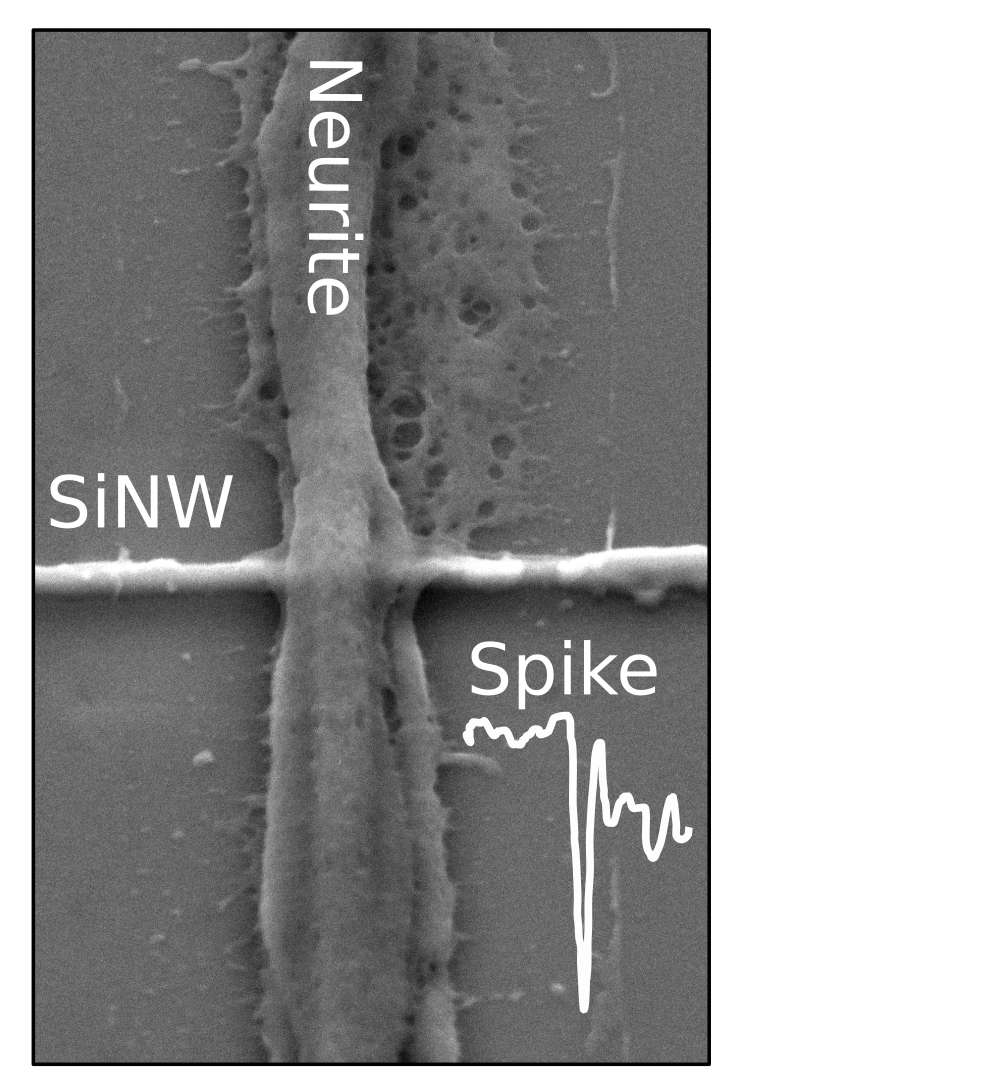 Here,
we demonstrated the CMOS-compatible fabrication of silicon nanowires field effect transistors arrays for multiscale addressing of neural networks - at the nano and mesoscales -
to record electrical signals from neurons, such as local field potential and unitary spike. The SiNW-array enables to follow single spike propagation
with an optimized morphological and electrical coupling. Its combination with micro-patterning techniques to guide neurons above the SiNW array enables to follow spike propagation at very precise
location along defined networks, being useful for many applications (Delacour et al. 2021 Neuron-Gated Silicon Nanowire Field Effect Transistors to Follow Single Spike Propagation within Neuronal Network. Advanced Engineering Materials, 23(4), 2001226).
Here,
we demonstrated the CMOS-compatible fabrication of silicon nanowires field effect transistors arrays for multiscale addressing of neural networks - at the nano and mesoscales -
to record electrical signals from neurons, such as local field potential and unitary spike. The SiNW-array enables to follow single spike propagation
with an optimized morphological and electrical coupling. Its combination with micro-patterning techniques to guide neurons above the SiNW array enables to follow spike propagation at very precise
location along defined networks, being useful for many applications (Delacour et al. 2021 Neuron-Gated Silicon Nanowire Field Effect Transistors to Follow Single Spike Propagation within Neuronal Network. Advanced Engineering Materials, 23(4), 2001226).
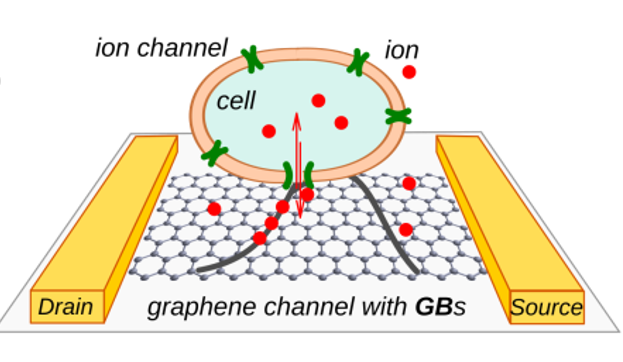 In this study, we demonstrated the ability to sense individual neuron's ion channel graphene FET,
which is the ultimate resolution that electrical neural interface can achieve.
Within that work, we also proposed a novel detection paradigm for the detection of those nanoscale events based on grain boundary assisted field effect detection
(Veliev et al ... Delacour 2018 Sensing ion channel in neuron networks with graphene field effect transistors. 2D Materials, 5(4), 045020).
In this study, we demonstrated the ability to sense individual neuron's ion channel graphene FET,
which is the ultimate resolution that electrical neural interface can achieve.
Within that work, we also proposed a novel detection paradigm for the detection of those nanoscale events based on grain boundary assisted field effect detection
(Veliev et al ... Delacour 2018 Sensing ion channel in neuron networks with graphene field effect transistors. 2D Materials, 5(4), 045020).
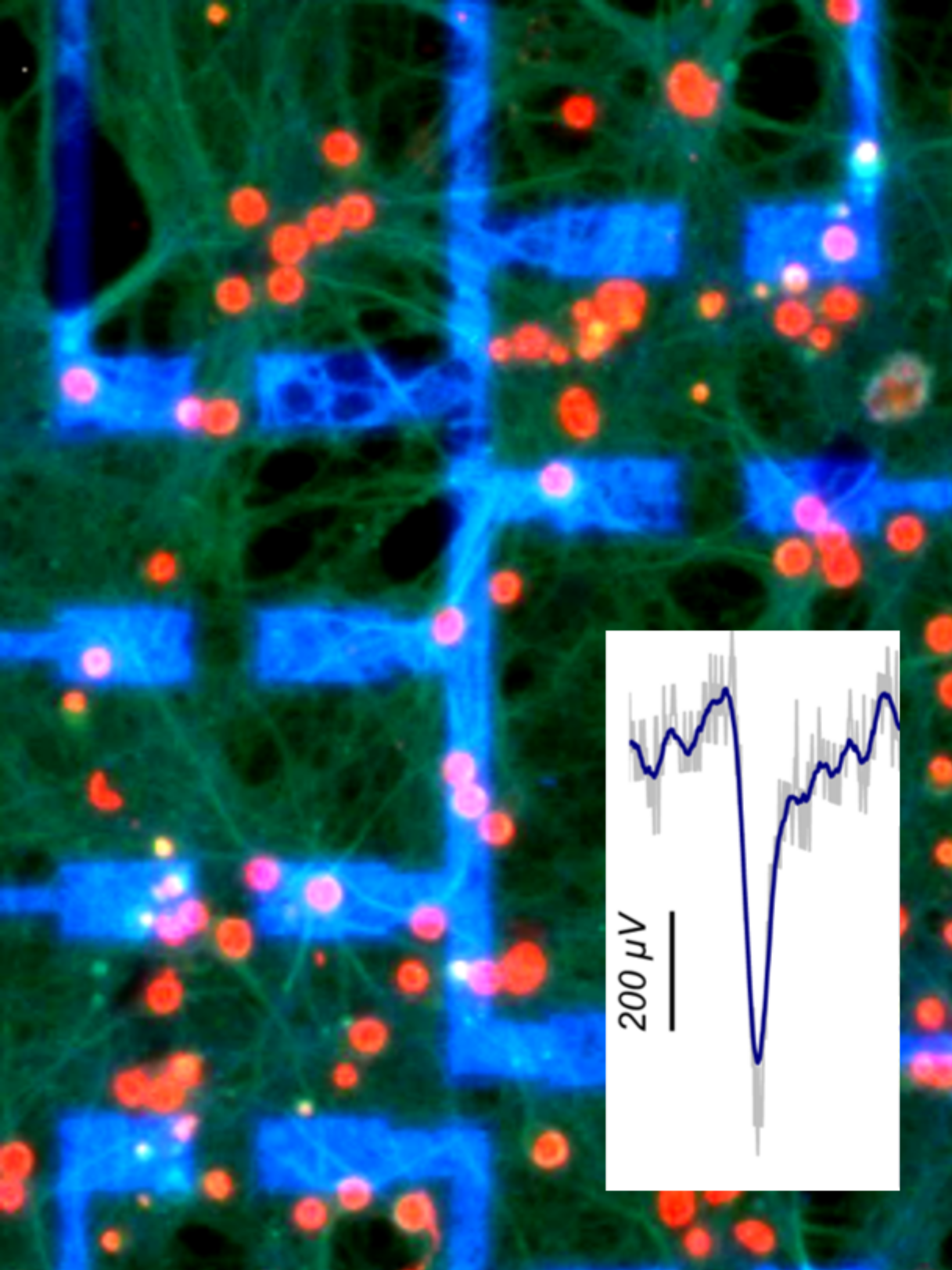 Here,
we reported on the fabrication of graphene field effect transistors (G-FETs) on various substrates (silicon, sapphire, glass coverslips, and polyimide deposited onto Si/SiO2 substrates),
exhibiting high sensitivity (4 mS/V) and low noise level. We demonstrated the in-vitro detection of the spontaneous activity of hippocampal neurons in-situ-grown on top of the graphene
sensors during more than three weeks. These results provided an advance toward the realization of biocompatible devices for reliable and high spatio-temporal sensing of neuronal activity
for both in-vitro and in-vivo applications (Veliev et al ... Delacour 2017 Recording spikes activity in cultured hippocampal neurons using flexible or transparent graphene transistors.
Frontiers in neuroscience, 11, 466.)
Here,
we reported on the fabrication of graphene field effect transistors (G-FETs) on various substrates (silicon, sapphire, glass coverslips, and polyimide deposited onto Si/SiO2 substrates),
exhibiting high sensitivity (4 mS/V) and low noise level. We demonstrated the in-vitro detection of the spontaneous activity of hippocampal neurons in-situ-grown on top of the graphene
sensors during more than three weeks. These results provided an advance toward the realization of biocompatible devices for reliable and high spatio-temporal sensing of neuronal activity
for both in-vitro and in-vivo applications (Veliev et al ... Delacour 2017 Recording spikes activity in cultured hippocampal neurons using flexible or transparent graphene transistors.
Frontiers in neuroscience, 11, 466.)
Graphene for neural interfaces
Being highly neuro-compatible, chemically inert, transparent, flexible and still highly conducting, this 2D materials could enhance sensitivity and time stability of the current biosensors, neuronal interfaces and neuroprothesis.
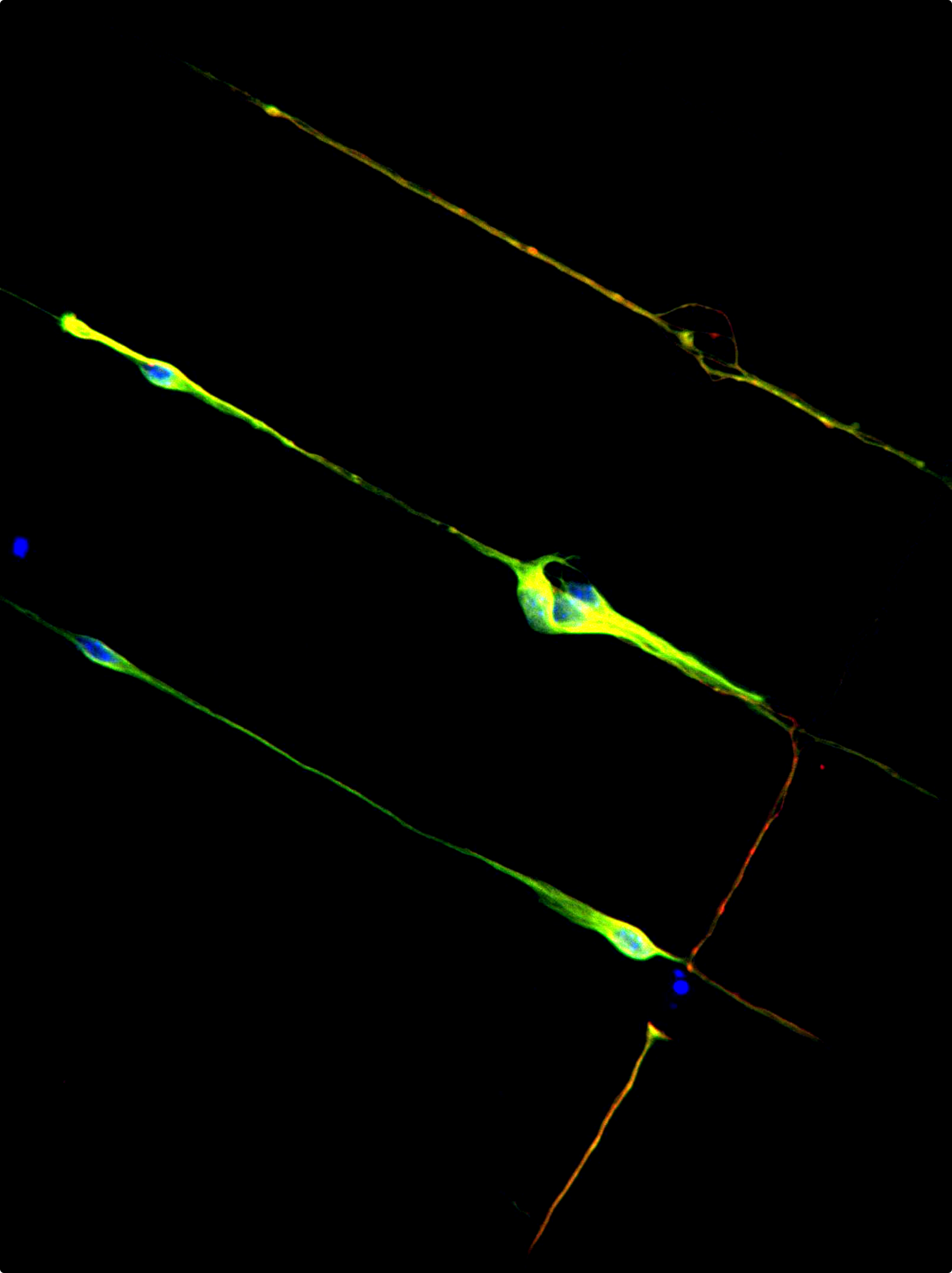 Here,
we studied the development of primary hippocampal neurons grown on bare graphene and show that pristine graphene significantly improves the neurons adhesion and neurite spreading.
This exceptional possibility to bypass adhesive coating allows a direct electrical contact of graphene to the cells and reveals its great potential for recording neurons electrical activity.
In this study, we found that the crystallinity (defect and doping) of CVD grown graphene plays an important role in neuronal attachment. In particular, we shown that the decreasing crystalline
quality of graphene tunes the neuronal affinity from highly adhesive to fully repellent, that could be usefull to define neuron network patterns
(Veliev et al... Delacour 2016 Impact of crystalline quality on neuronal affinity of pristine graphene. Biomaterials, 86, 33-41)
Here,
we studied the development of primary hippocampal neurons grown on bare graphene and show that pristine graphene significantly improves the neurons adhesion and neurite spreading.
This exceptional possibility to bypass adhesive coating allows a direct electrical contact of graphene to the cells and reveals its great potential for recording neurons electrical activity.
In this study, we found that the crystallinity (defect and doping) of CVD grown graphene plays an important role in neuronal attachment. In particular, we shown that the decreasing crystalline
quality of graphene tunes the neuronal affinity from highly adhesive to fully repellent, that could be usefull to define neuron network patterns
(Veliev et al... Delacour 2016 Impact of crystalline quality on neuronal affinity of pristine graphene. Biomaterials, 86, 33-41)
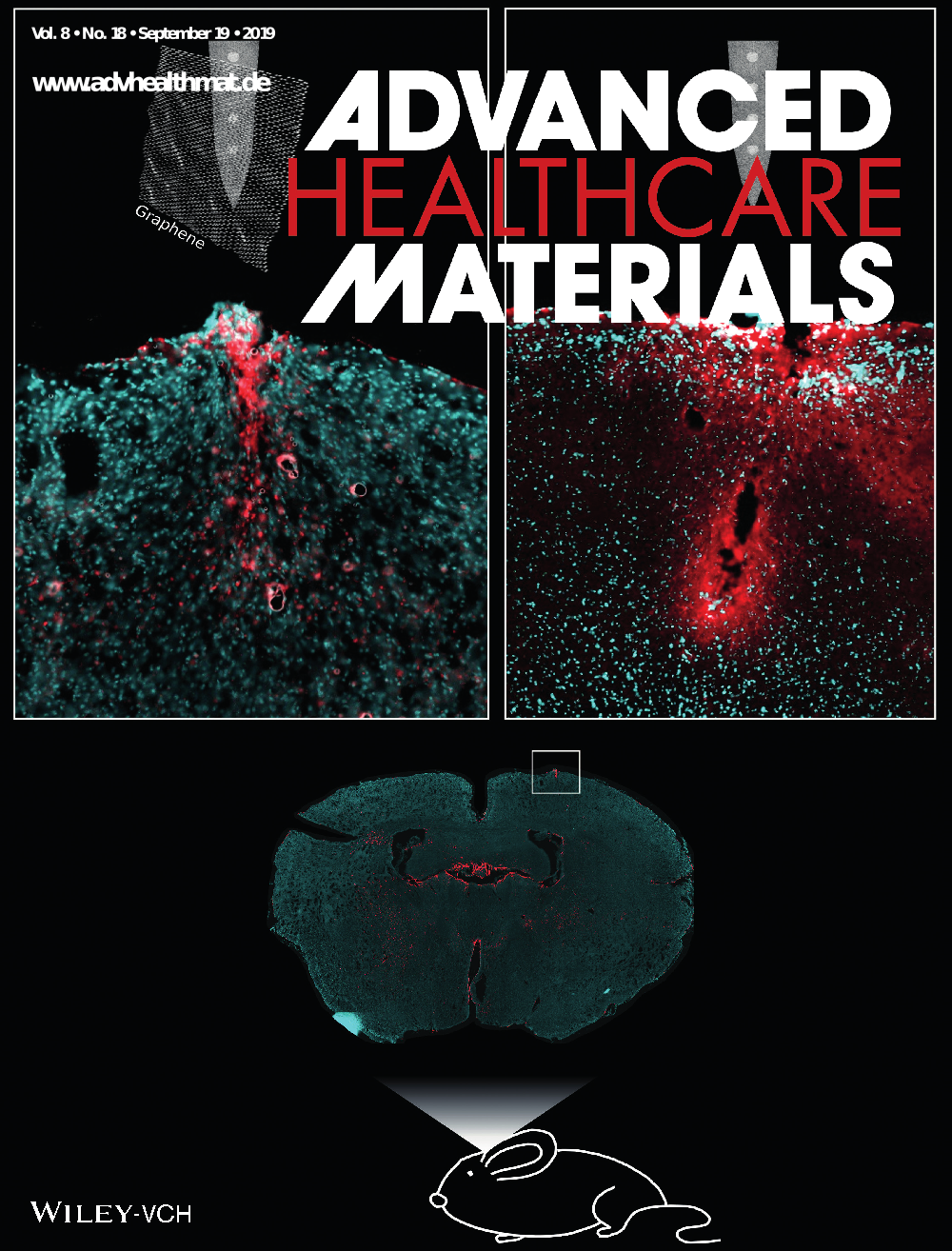 Here,
we developed an innovative coating method to wrap three-dimensional intracortical probes with a continuous monolayer graphene. We have shown that monomlayer graphene reduces the glial scaring process
around intracortical implants and enhances both efficiency and life-time of the recording electrodes, allowing real-time samplings of motor-neurons activity during 5 weeks. Since graphene coatings
can easily be implemented on a wide range of 3D surfaces, this study further motivate the use of graphene and related materials to unveil the current rejection of neural probes currently used in many
research areas, from fundamental neurosciences to medicine and neuroprostheses (Bourrier et al ... Delacour 2019 Monolayer graphene coating of intracortical probes for long lasting neural activity monitoring. Advanced healthcare materials, 8(18), 1801331).
Here,
we developed an innovative coating method to wrap three-dimensional intracortical probes with a continuous monolayer graphene. We have shown that monomlayer graphene reduces the glial scaring process
around intracortical implants and enhances both efficiency and life-time of the recording electrodes, allowing real-time samplings of motor-neurons activity during 5 weeks. Since graphene coatings
can easily be implemented on a wide range of 3D surfaces, this study further motivate the use of graphene and related materials to unveil the current rejection of neural probes currently used in many
research areas, from fundamental neurosciences to medicine and neuroprostheses (Bourrier et al ... Delacour 2019 Monolayer graphene coating of intracortical probes for long lasting neural activity monitoring. Advanced healthcare materials, 8(18), 1801331).
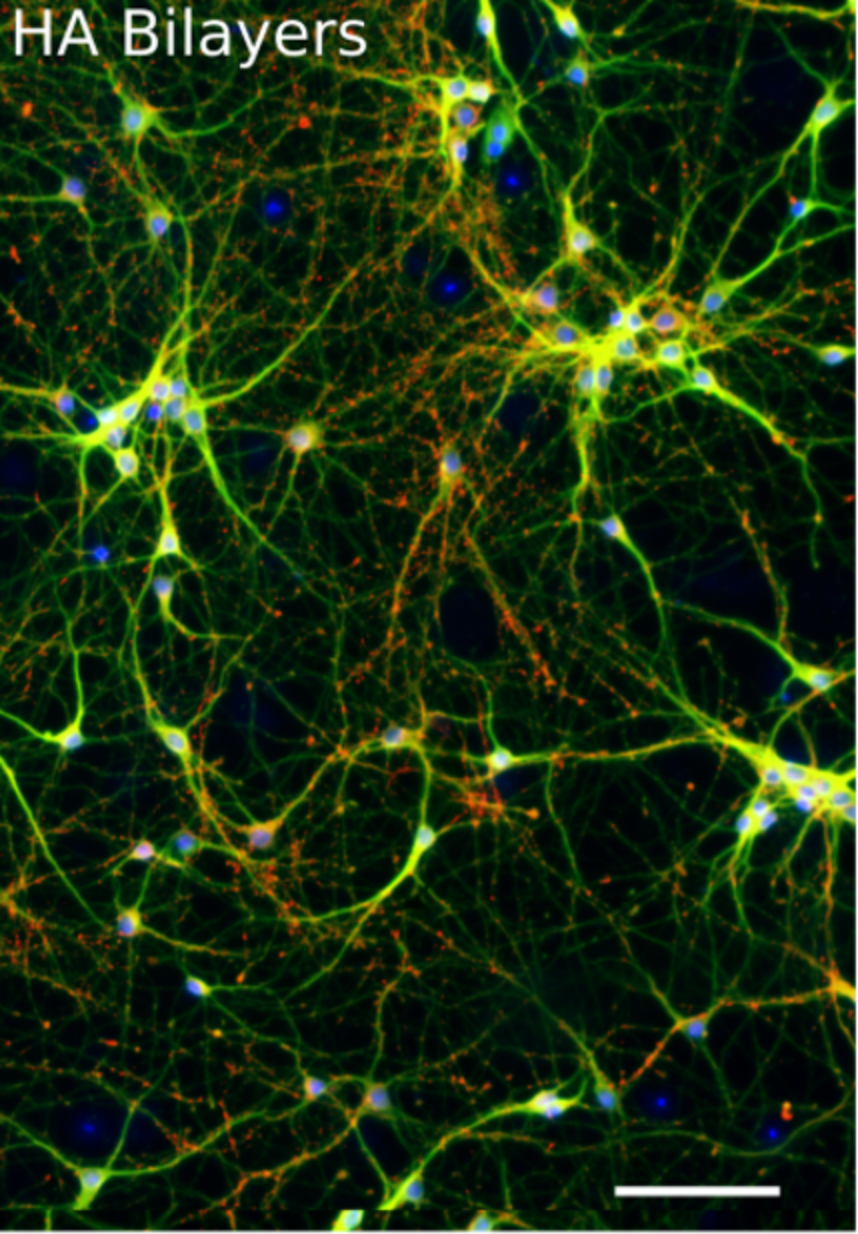 In this work,
we have investigated the ability to protect graphene with a natural, biocompatible and degradable polymeric film derivated from hyaluronic acid (HA).
We showed that HA-based coatings can be deposited over a wide range of substrates, including intracortical probes and graphene FET arrays without altering the underlying device material,
its biocompatibility and sensitivity. The reported graphene functionalization offers promising alternatives for improving the acceptance of various neural interfaces
(Bourrier et al ... Delacour 2020 Introducing a biomimetic coating for graphene neuroelectronics: toward in-vivo applications. Biomedical Physics & Engineering Express, 7(1), 015006)
In this work,
we have investigated the ability to protect graphene with a natural, biocompatible and degradable polymeric film derivated from hyaluronic acid (HA).
We showed that HA-based coatings can be deposited over a wide range of substrates, including intracortical probes and graphene FET arrays without altering the underlying device material,
its biocompatibility and sensitivity. The reported graphene functionalization offers promising alternatives for improving the acceptance of various neural interfaces
(Bourrier et al ... Delacour 2020 Introducing a biomimetic coating for graphene neuroelectronics: toward in-vivo applications. Biomedical Physics & Engineering Express, 7(1), 015006)
Thermodynamics of neurons
we aim to implement thermal probes to track small variations of temperature induced by neuronal activity.
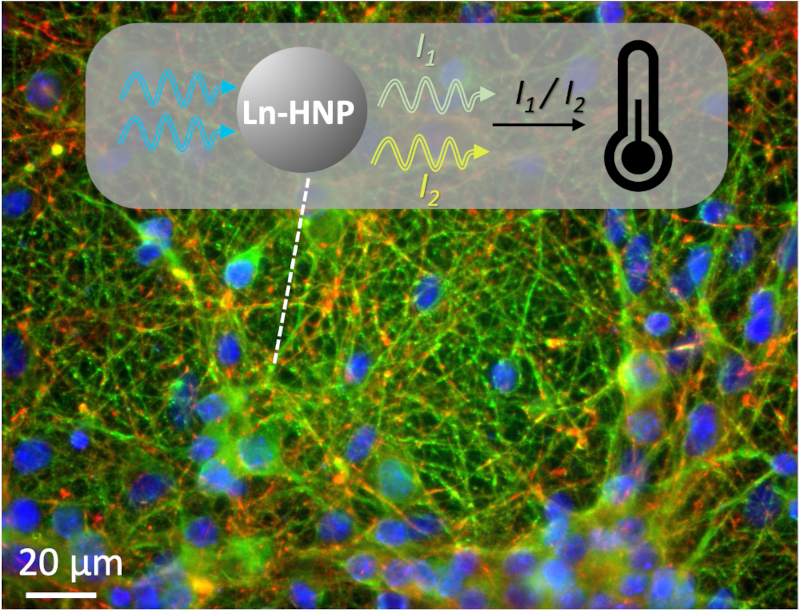 Here, we investigate the use of dual-light emitting nanocrystals that exhibits both second harmonic
signal and photoluminescence for temperature reading of neuronal network (Dantelle, Reita, Delacour 2021 Luminescent Yb3+, Er3+-Doped a-La(IO3)_3 Nanocrystals for Neuronal Network Bio-Imaging and Nanothermometry. Nanomaterials, 11(2), 479)
Here, we investigate the use of dual-light emitting nanocrystals that exhibits both second harmonic
signal and photoluminescence for temperature reading of neuronal network (Dantelle, Reita, Delacour 2021 Luminescent Yb3+, Er3+-Doped a-La(IO3)_3 Nanocrystals for Neuronal Network Bio-Imaging and Nanothermometry. Nanomaterials, 11(2), 479)


